
2. The wheels included in the standard package of the cars considered in this Guide are equipped with special indicator tapes, having a width of about 12 mm and appearing on the tread pattern when the latter is worn to an acceptable limit. The minimum allowable tread depth is 1.6mm. You can assess the degree of tread wear using a special inexpensive device - ask in car accessories stores.
3. Pay attention to any signs of uneven tread wear. Such local defects as bowl-shaped rubbing, flattening, etc., usually owe their occurrence to violations of the angles of the front wheels, or the balance of the latter. To identify and eliminate faults, the car should be driven to a specialized car service workshop or to a service station.
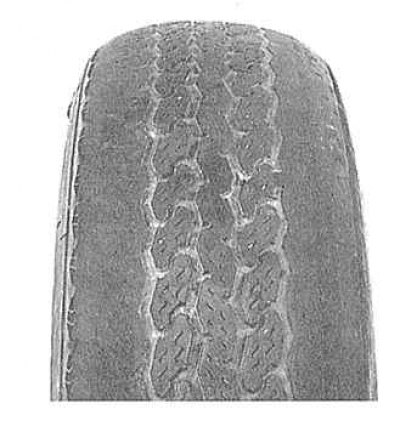
Insufficient tire inflation pressure
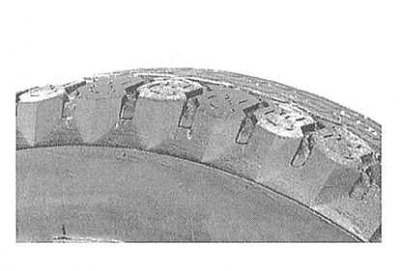
cupped defects
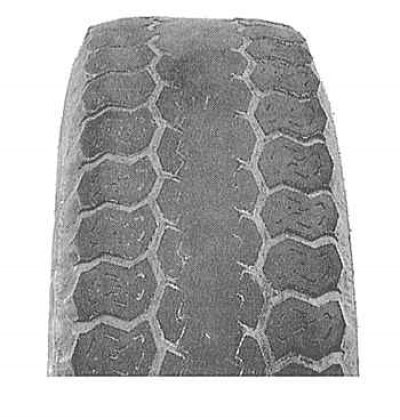
Tire inflation pressure too high

Violated toe-in adjustment, or too much camber
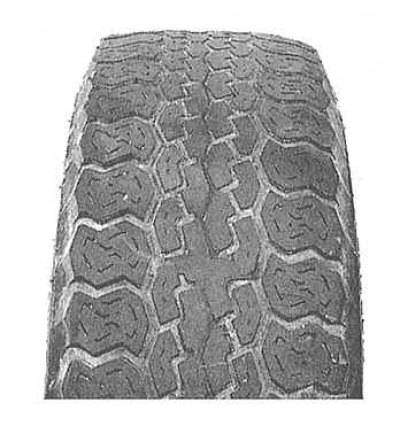
Flaky tread wear caused by misalignment of wheels
4. Carefully inspect the tires on all wheels for cuts, punctures, and foreign objects stuck in the grooves of the tread pattern. Sometimes a punctured tire continues to hold air inside itself for some more time due to the fact that the object that punctured the tire continues to be stuck into it. The reason for the slow deflation of the tire may be a defect in the nipple of the wheel inflation valve - check the condition of the nipple. Carefully inspect the protector for the presence of foreign objects stuck in it and signs of a violation of the tightness of the fit of the repair "traffic jams", used to repair small tire punctures. It is quite simple to verify the presence of a puncture - it is enough to moisten the suspected area of the tire surface with a solution of soapy water - if a puncture occurs, the solution will begin to bubble. Minor punctures are usually easily repaired at tire shops.
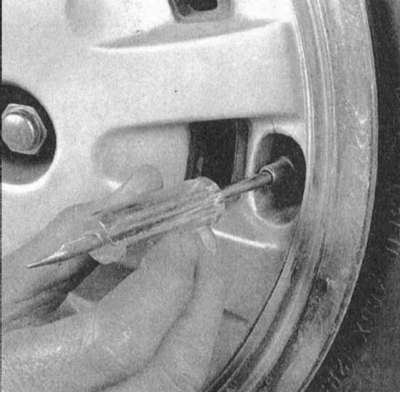 | 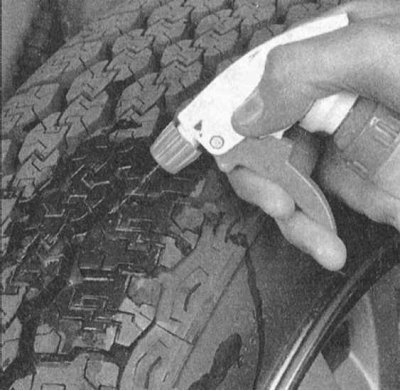 |
5. Carefully inspect the inner walls of the tires of all four wheels for the presence of brake fluid leaks on them. If any are found, immediately check the condition of the relevant brake mechanisms and the hydraulic lines connected to them.
6. Maintaining the required tire inflation pressure will significantly extend the life of the wheels, in addition, it will provide maximum driving comfort and will not reduce the vehicle's controllability. Remember that it is almost impossible to determine the correct tire pressure by eye, especially when it comes to radial tires. It is necessary to keep a suitable pressure gauge on hand at all times - the readings of the booster compressor meters at gas stations and service stations should not be trusted.
7. Check the inflation pressure of the tires when the tires are cold - it is understood that the car has traveled no more than one mile in the last three hours. Remember that an increase in pressure by 0.3÷0.6 kgf/cm2 as a result of heating the wheel is a completely natural phenomenon.
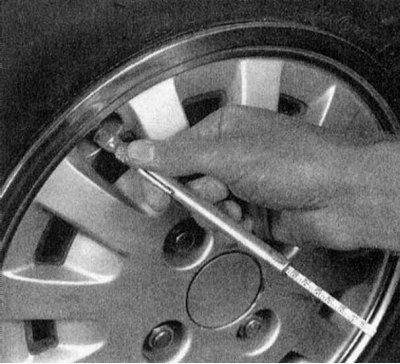
8. Remove the protective cap from the wheel inflation valve and firmly press the pressure gauge nozzle to the valve outlet, pressing the nipple stem. Read the reading and compare it with the normative data, correct the pressure if necessary.
9. Do not forget to screw the protective cap of the valve back into place to prevent moisture and dirt from entering the nipple. Check the pressure in all tires, including the spare.
Note. The inflation pressure of a compact type spare tire is usually noticeably higher than that of conventional wheels.
